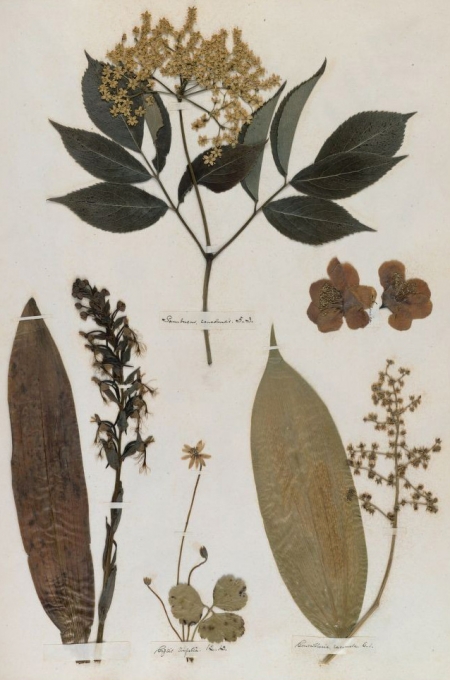It is not widely known that our great American poet Emily Dickinson was a practiced gardener before she became an accomplished poet. And though her poetry is boldly original and even "modern" in so many of its attributes such as intense compression, ellipsis, and off-rhyme, Dickinson was a woman who lived in the Victorian age. Women then were expected to be not only what English poet Coventry Patmore called "the Angel in the House" but the Muse of the Garden as well. Emily Dickinson, then, had two vocations.

Re-creation of Emily Dickinson's 19th-century New England flower garden, on display at the New York Botanical Garden's exhibition Emily Dickinson's Garden: The Poetry of Flowers; Photo by Ivo M. Vermeulen
When she was 11, Dickinson wrote of helping her mother tend the annuals and perennials in their cottage garden—roses, cyclamen, lobelia, tulips, and more. Later, the poet would care for flowers in her two-acre garden as well as in the conservatory her father built on the southeast corner of their home. Her youthful enthusiasm for botany inspired her at age 14 to mount a herbarium, a popular pastime for girls in the mid-1800s.
In an 1845 letter to her friend Abiah Root, Dickinson inquires: "Have you made an herbarium yet? I hope you will if you have not, it would be such a treasure to you; most all the girls are making one. If you do, perhaps I can make some additions to it from flowers growing around here."
Dickinson would explore nearby woodlands and meadows for new flowers to collect. Ultimately, she pressed over 400 specimens into a leather-bound album, arranging her specimens artistically, labeling sixty-five of the four hundred with the genus and species according to the Linnaean system of classification.


Emily Dickinson's Herbarium, digital facsimile. By permission of the Houghton Library, Harvard University; A facsimile edition of Emily Dickinson's Herbarium is available from Harvard University; MS Am 1118.11
Though only a few of Dickinson's poems were printed during her lifetime, many people remembered receiving one of them, often tucked into an exquisite bouquet that she had grown and arranged herself. These interests can be traced in her literary work as well. Indeed, more than two-thirds of Dickinson's lyrical letters to family and chosen friends and one-third of her brilliantly idiosyncratic poems have wildflowers or other flowers as their subject.
Mid-Victorians believed that each flower or plant had a symbolic meaning, including Dickinson's teacher, Mrs. Almira H. Lincoln, who wrote a book titled Symbolical Language of Flowers. For Dickinson the jasmine (which appeared on the first page of her herbarium) meant "passion" while to give someone a jasmine vine meant, "You are the soul of my soul." Dickinson would often imply and include these meanings in the poems she wrote or the bouquets she sent.
Dickinson's favorite flowers include the gentian, the crown imperial, the geranium, the rose, and the Indian pipes that her friend Mabel Todd painted to adorn the cover of the first edition of Dickinson's poems in 1890. Dickinson also compared herself to a daylily ("red like her auburn hair").
Flowers are also at the heart of what so many think of as the romantic "mystery" of Dickinson's life. It was Samuel Bowles, the editor of The Springfield Republican, who gave Dickinson a jasmine vine that she kept alive for decades. Again, it was Bowles who called Emily "Daisy," his "Queen." By then, she was wearing the white dress (which appeared in the 2008 National Poetry Month poster) that may have signified her marriage to the Muse, her artist's self-consecration. These references appear in the poem "The daisy follows soft the sun," believed to have been written for a man, an imagined lover, called "Master"—and in a famous unsent letter to "Master," Emily/Daisy yearns for "the Queen's place" next to him at night.
Adapted from "Revealing Emily Dickinson's Life" by Judith Farr, commissioned by the New York Botanical Garden as part of the exhibition Emily Dickinson's Garden: The Poetry of Flowers.
